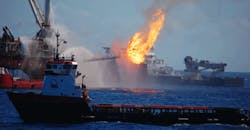Deepwater Horizon Highlights the Risks of Outsourcing
In 2010, the Deepwater Horizon offshore drilling rig exploded, killing 11 and triggering the largest oil spill in U.S. history.
The rig was plagued with compliance issues leading up to the disaster, receiving six citations from the Mineral Management Service for safety issues including non-grounded electrical equipment and a non-functioning blowout preventer.
A new movie titled “Deepwater Horizon” documents the circumstances that led up to the disaster and the consequences of what could happen if safety doesn’t permeate to the subcontractor level.
Avetta Co-founder Jared Smith shared his views about the movie and the importance of finding the right technology to vet and work with subcontractors or suppliers.
Deepwater Horizon is one of the first movies to demonstrate to the general public the risks associated with outsourcing a job. The byproduct of the 100-year trend of outsourcing is that risk is introduced and needs to be mitigated, Smith said.
The challenge facing oil companies the sheer number of contractors required to do the work. For example, a mid-size oil company utilizes a minimum of 1000 contractors.
Using a platform that allows a contractor to manage the data and workflows associated with supplier vetting makes it possible to not only select the right supplier but also allows the contractor to communicate their standards, making the relationships stronger and more productive, he said.
Smith highlighted the four-step process of mitigating risk when outsourcing:
1. Perform risk analysis.
2. Find the right supplier.
3. Partner and monitor with suppliers during the project.
4. Evaluate performance and improve.
“Transparency breeds trust,” Smith said. “Suppliers need to be transparent about who they are from a performance, compliance and cultural perspective.”
Still, the most important thing “Deepwater Horizon” gets across to the general public is an understanding of the human factor when a disaster occurs, Smith said.
“Every movie needs a hero and every movie needs a villain,” he said. “I absolutely love that the movie does a great job at telling the human stories – the grief and anxiety the family and employee goes through.”
